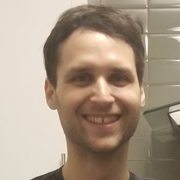Physics Faculty Members & Research Fields
Faculty Members:
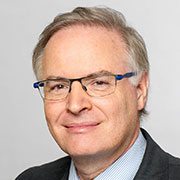
Prof. David Andelman (Full Professor) Andelman’s group specializes in studying soft matter and biological systems in collaboration with several experimental teams worldwide. In particular, they explore the properties of self-assembling polymers, and the ways to manipulate them at patterned surfaces and in thin film geometries in relation with nano-lithography. In another line of research, they explore bio- and soft matter systems where charges play an important role. They investigate ionic liquids at charge interfaces and membranes, and the response of ionic solutions and charged macromolecules to an external electric field.
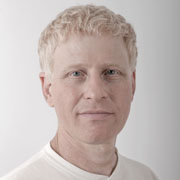
Prof. Shimshon Bar-Ad (Associate Professor) conducts experimental research in several sub-fields of modern optics, including nonlinear optics, quantum optics, and ultrafast laser spectroscopy. At present, the research in nonlinear optics focuses on the fluid-like propagation of light in self-defocusing nonlinear Kerr media, and the possibility of using this hydrodynamic analogy to create an all-optical analogue event horizon and demonstrate analogue Hawking radiation. The research in quantum optics involves weak measurements that demonstrate "which path" paradoxes in nested interferometers. The optically induced insulator-metal phase transition in vanadium dioxide was also recently studied.
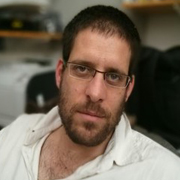 Yohai Bar Sinai (Senior Lecturer) is opening a new research group focused on data-driven studies of complex systems. He is mostly interested in classical mechanical systems and in harnessing machine learning techniques to study them.
Yohai Bar Sinai (Senior Lecturer) is opening a new research group focused on data-driven studies of complex systems. He is mostly interested in classical mechanical systems and in harnessing machine learning techniques to study them.
Research achievements include: Developing an algorithm for systematic coarse-graining of partial differential equations using machine-learning. Formulating a constitutive law for frictional sliding, constrained by thermodynamics and experimental observations, and demonstrating that this law generically gives rise to novel frictional dynamics. Proving that disordered mechanical systems feature a non-trivial spatial distribution of heat capacity which is highly predictive of local “softness” in amorphous solids and calculating it exactly in one dimensional systems.
Future directions include: Studying frictional phenomena by machine-learning interfacial images. Developing efficient numerical schemes by using data-driven techniques to identify and leverage repeated patterns in solution manifolds. Developing a geometric description of mechanical meta materials.
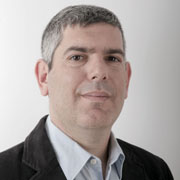
Prof. Roy Beck-Barkai (Associate Professor) works on a range of topics in biophysics, soft-matter physics and statistical mechanics. Beck’s research group is focused on the biophysical understanding of the forces and interactions governing the self-assembly of biomolecules into functional nanoscopic structures including the organization principles of cytoskeleton proteins within the neuronal system, intrinsically disordered proteins, membranes and nano-complexes of lipids and proteins. Their research combines various biochemical techniques to isolate and express desired products and advance microscopic and biophysical techniques such as small angle X-ray scattering to characterize the structures and their governing intermolecular forces.
Research achievements include: characterization of delayed and coordinated nucleation of supercooled phospholipid membranes; developing biophysical models to match the measured protein-based hydrogel mechanics and nanoscopic structures originated from the neuronal cytoskeleton; biophysical insights correlating structural phase transition in myelin sheaths as pathological marker for multiple sclerosis; developing information-based entropy estimators for computer simulation datasets.
Future directions include: developing novel techniques to measure in high throughput transient and reversible interactions between intrinsically disordered proteins; design, measure and model, hybrid polypeptide-hydrocarbon dendrimer amphiphiles that self-assemble into tunable nanoscale structures.
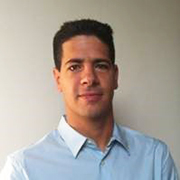
Dr. Moshe Ben Shalom (Senior Lecturer) is building a layered-2D-materials lab. The lab’s research exploits thin crystalline structures to study emerging quantum transport phenomena in low-dimensional electronic systems, in particular: 2D superconductivity, planar Josephson junctions, quantum Hall effect, electronic mini-bands in Moiré super-lattices, and hydrodynamic-like flow of electrons.
Research achievements include: measuring the role of spin-orbit interactions on superconductivity in 2D oxide interfaces; demonstrating the first “long” and yet ballistic Josephson current and describing the mesoscopic mechanism of such systems under high magnetic fields; tracing frequent electron-electron collisions and measuring the viscosity of electrons in graphene.
Future directions include: Using strain to induce extreme synthetic gauge fields and new electronic orders, as well as constructing artificial super-lattice-potentials to realize Bloch-oscillations in graphene.
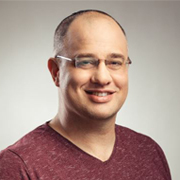
Two-dimensional van-der Waals materials are a playground for fascinating quantum phenomena, offering new ways to tackle long standing mysteries in condensed matter physics. Our group develops theoretical models that leverage the extraordinary diversity and tunability of these systems to deepen our understanding of solid-state physics.
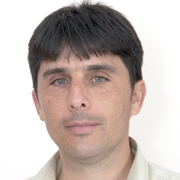
Prof. Yoram Dagan (Full Professor) works on quantum phenomena in strongly correlated materials including unconventional superconductors, emergent phenomena at oxide interfaces such as superconductivity and magnetism, combining orders at interfaces, i.e. superconductivity and ferroelectricity, superconductivity and magnetism, ferroelectricity and ferromagnetism, topological insulators and superconductors and quantum spin-liquids.
Research achievements include: Measuring the spin-orbit interaction in strontium titanate-based oxide interfaces and understanding its effect on superconductivity both for (100) and (111) directions.; understanding the role of electronic correlations in the band structure of interfaces and its effects on quantum oscillations and transport properties; designing and fabricating quantum wires without spin degeneracy from strontium titanate based oxide interfaces; understanding the evolution of the Fermi surface in doped topological insulators; understanding the role of oxygen, holes and electrons in electron-doped cuprate superconductors; finding exotic superconductivity and possible quantum spin liquid in various allotropes of tantalum disulfide.
Future directions include: Combining orders of ferroelectricity, superconductivity, and magnetism at oxide interfaces, interface enhanced superconductivity, quantum oscillations in candidate spin liquids and exotic superconductors.
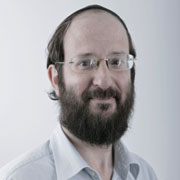
Prof. Eli Eisenbeg (Full Professor) works on application of statistical methods and modeling to large-scale RNA expression data. In particular, he focuses on inconsistencies between the observed sequence-content of the RNA, as found in deep-sequencing experiments, and the reference genome. These are mostly due to technical and biological noise, but also include signatures of important regulated RNA modifications, called "RNA editing". The crucial role of these RNA modifications to the proper function of the cell and the organism has been increasingly recognized in recent decades, with A-to-I RNA editing being the most common modification. Computational approaches, such as the ones developed and employed by Eisenberg and colleagues, have become the standard tool for detection, quantification and analysis of A-to-I RNA editing events.
Research achievements include: development of several strategies for detection of new editing events in various classes of RNA molecules (repetitive elements, coding sequences, micro-RNAs, etc); quantitative characterization of editing in normal and cancerous human tissues, showing a global deregulation of editing in tumors; reporting the exceptional level of recoding (change of the genomic data content that codes for protein sequences) in cephalopods, showing ~3 orders of magnitude higher level of recoding compared to any other species tested.
Future directions include: (i) study of the role of editing in protection against false activation of the innate immune system; (ii) developing a robust and reliable method for profiling the recoding sites in human and other mammals; (iii) understanding the evolution of recoding events.
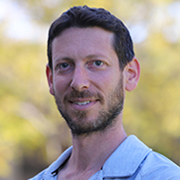 Quantum information with atoms and photons: Quantum computation, quantum metrology, and quantum simulation with arrays of ultracold atoms. Further research directions include quantum optics: generation, storage and interaction of single photons with atomic ensembles.
Quantum information with atoms and photons: Quantum computation, quantum metrology, and quantum simulation with arrays of ultracold atoms. Further research directions include quantum optics: generation, storage and interaction of single photons with atomic ensembles.
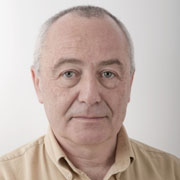
Prof. Alexander Gerber (Full Professor) works on a number of subjects in experimental solid state physics, including: disordered and granular metals and superconductors in high magnetic fields, nano-scale magnetism, quantum effects in ferromagnets, heterogeneous magnetic systems, extraordinary Hall effect, spintronics and Hall effect spintronics, magnetic semiconductors, topological Hall effect, applications of Hall effect spintronics for high sensitivity magnetic sensors, random access memory and high selectivity gas detection.
Research achievements include: Seven granted and pending patents on magnetic sensors, multi-bit random access memory and magnetic gas detection.
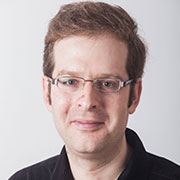
(Associate Professor) research concerns the theory (both analytical and numerical) of nanoscale and low-dimensional quantum condensed matter systems, including: semiconductors, normal and superconducting metals, carbon-based materials, topological insulators, and ultracold atomic gases. These systems offer the fascinating challenge of understanding the interplay between quantum interference, strong correlations, topology, and nonequlibrium dynamics. Furthermore, they are important as the basic building blocks of future devices, including quantum simulators and quantum computers.
Research achievements and future directions include: 1) Topological states by dissipation: finding a recipe for using purely-dissipative dynamics for the creation of Gaussian topological states in ultracold atoms. The resulting states have peculiar response to artificial external electromagnetic fields and disorder. 2) Nonequilibrium quantum impurities: the accurate description of the nonequilibrium steady state properties of quantum impurities (such as an interacting quantum dot in the Kondo regime under the application of finite bias voltage) is a central open problem. Goldstein is developing numerically-exact algorithms for it, based on Wilson’s equilibrium Numerical Renormalization Group and a scheme he recently introduced to represent nonequilibrium conditions by additional Lindblad reservoirs. 3) Quantum simulation using superconducting circuits. While general-purpose quantum computers are still far from reach, the situation is better for the less flexible analogue quantum simulators. In collaboration with the Manucharyan lab at Maryland he is introducing several realistic superconducting nano-circuits which can reveal strongly-correlated quantum impurity physics, with sizeable nonlinear effects for even when probed by single microwave photons. 4) Strong correlations in oxide interfaces. The electronic structure of an interface could be very different from its constituent materials. A prominent example is the interface between the insulators SrTiO3/LaAlO3, which unexpectedly exhibits 2D electron-liquid properties with strong spin-orbit coupling, magnetism, and superconductivity. Measurements in Prof. Yoram Dagan’s lab at Tel Aviv have shown that these phenomena have a non-monotonic dependence on the back gate voltage, that is, on the carrier density. Goldstein is developing a theory to explain these.
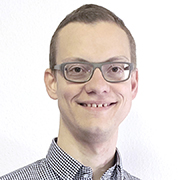 Dr. Tobias Holder joined the condensed matter department in fall 2023. His primary research interests are the theoretical investigation of phenomena in quantum transport, as well as nonlocal and ballistic/hydrodynamic electron flow in high-mobility devices. These topics lie at the intersection of several timely research efforts in the condensed matter community which try to make sense of the wealth of information that is becoming available about complex and layered materials, heterostructures and van-der-Waals systems. The goal is to disassemble intricate questions into digestible pieces, in order to attain a genuine understanding of the underlying mechanisms.
Dr. Tobias Holder joined the condensed matter department in fall 2023. His primary research interests are the theoretical investigation of phenomena in quantum transport, as well as nonlocal and ballistic/hydrodynamic electron flow in high-mobility devices. These topics lie at the intersection of several timely research efforts in the condensed matter community which try to make sense of the wealth of information that is becoming available about complex and layered materials, heterostructures and van-der-Waals systems. The goal is to disassemble intricate questions into digestible pieces, in order to attain a genuine understanding of the underlying mechanisms.
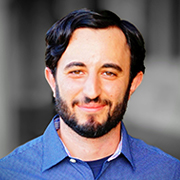
-
Quantum optics and quantum information: quantum states of light, quantum electron optics, quantum correlations, and quantum metrology.
-
Imaging and microscopy: super-resolution, dose-efficient microscopy, quantum microscopy, and biological imaging,
I am interested in controlling electronic states of matter in quantum materials and studying their dynamics on ultrafast (femtosecond) timescales. This is achieved in my lab using two approaches: material by design crystal growth and by tailoring light matter interactions to stabilize out of equilibrium electronic states.
In my lab we employ novel optical techniques in order to study quantum materials, while the main focus of the lab is using nonlinear optics in order to reveal the symmetry properties of electronic states we are also developing ultrafast electronic transport techniques and more traditional spectroscopy techniques.
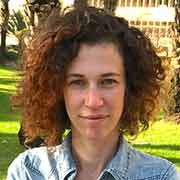
Dr. Roni Ilan (Senior Lecturer) works on a range of problems within the field of theoretical condensed matter physics. Among those are problems related to topological phases of quantum matter, including the study of materials such as topological insulators, metals, and superconductors, the application and development of topological band theory, and strongly correlated phases such as the fractional quantum Hall effect. In addition, Dr. Ilan is interested in mesoscopic systems and devices and specializes in quantum transport phenomena, and studies novel metamaterials that realize topological phenomena in (semi) classical settings.
Research achievements include: the prediction of robust transport signatures of topological superconductivity in topological insulator nanowires. The prediction for the emergence of axial fields in Weyl semimetals under deformations and inhomogeneous conditions recently corroborated in experiments carried out on acoustic metamaterials.
Future directions include: studying high energy analogs in topological metals; designing systems with large Berry curvatures and anomalous transport, and studying topology and correlated states in twisted bi-layer systems; exploring novel systems with topological superconductivity and their probes; studying topology in non-Hermitian systems.
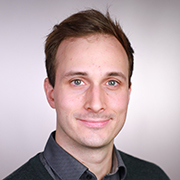
Dr. Dominik Maximilian Juraschek is joining the faculty of the School of Physics and Astronomy as a Senior Lecturer in October 2021. He studies hidden states of matter that can be induced in quantum materials through dynamical and in particular vibrational (phononic) processes. Dr. Juraschek uses a combination of computational and theoretical methods to describe nonlinear dynamics of the crystal lattice in a broad range of solid-state systems, including complex oxides, van der Waals materials, and low-dimensional dielectrics and magnets.
Research achievements include: Prediction of various nonlinear phononic excitation mechanisms that have subsequently been verified experimentally; prediction of the existence of phonon magnetic moments as a result of dynamical multiferroicity; creation of a theoretical framework for coherent coupling of phonons and magnetism (“phono-magnetism”).
Future directions include: Expanding the theory of nonlinear phononics as a basis for dynamical materials engineering; developing a nonlinear phononics code and platform; controlling electronic angular momentum through coupling of lattice, spin, and orbital degrees of freedom; investigating novel hybrid light-matter states (polaritons) and tuning them in optical cavities.
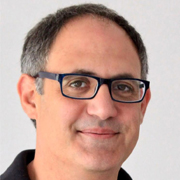
Dr. Yoav Lahini (Senior Lecturer) is setting up a new Complex Systems Lab. The aim of the lab is to promote the understanding of the physics of soft and disordered matter in far-from-equilibrium conditions, using advanced measurement techniques and computational tools.
Research achievements include: observation and characterization of long-lasting memory effects in mesoscopic systems, development of an ultra-fast label free technique for tracking single viruses, observation of topological states in disordered and quasi-periodic systems, observation of localization and its modification by nonlinearity in disordered systems, studying the effect of interactions in multi-particle quantum walks and their use in quantum information processing.
Future directions include: seeking universal principles governing the dynamics of disordered matter in far from equilibrium conditions, studying the mechanics of frustrated and topological metamaterials, exploring macroscopic self-assembly and studying biophysics at the nanoscale using smart illumination and advanced imaging, microscopy and nanoscopy techniques.
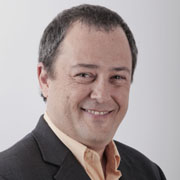
(Full Professor) is a theoretical physicist working on a range of topics in two separate fields: Quasicrystals and Nanomechanics. His work on quasicrystals in the last decade is mainly concerned with unlocking the secret to their thermodynamic stability -- especially in the context of soft condensed matter -- and using it to control their self-assembly via pair-potential design. In addition, he studies the fundamentals of aperiodic long-range order and its effect on physical properties, currently focusing on the puzzling nature of single-electron quantum wave functions in quasicrystals. In the field of nanomechanics Prof. Lifshitz's studies range from the mesoscopic physics of phonons in confined geometries and their interaction with electrons, the classical dynamics of coupled nonlinear nanomechanical resonators and oscillators, and the quantum-mechanical behavior of human-made nanoscale devices, with an emphasis on nonlinear quantum dynamics.
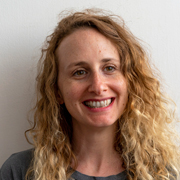
Naomi Oppenheimer (Senior Lecturer) is interested in complex fluids, statistical mechanics, soft matter, and biology-inspired physical systems. She uses theoretical analytical tools, numerical simulations, and a dash of experiments.
Research achievements include: predicting the effect of protein concentration on membrane viscosity, understanding why crumpled paper is shapeable, and studying the hydroelastic effect of a particle surfing its own wave in a thin elastic sheet.
Future directions include: studying heterogeneous materials in biology and for next-generation functional materials. For example: self-organization properties of active rotating particles in a 2D fluid, the effective properties of complex fluids with spatially varying viscosity, morphogenesis and pattern formation in biological systems.
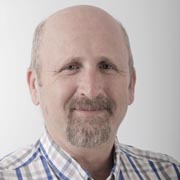
Prof. Alexander Palevski (Full Professor) is engaged with quantum electronic transport in condensed matter systems at low temperatures. The research topics span over many areas of modern solid state physics: superconductivity, ferromagnetism, Quantum Hall effect, and mesoscopic physics. Due to the diversity of the subject also the materials which are investigated cover a broad range of solids, like normal metals, ferromagnets, semiconductors, topological insulators and superconductors. The common denominator among the devices made of these material systems is the low dimensionality. A vast majority of the experimentally studied electronic systems are either two- or one-dimensional. Small dimensions of the devices fabricated in the lab are achieved using state of the art nanofabrication techniques, including photolithography, electron beam lithography, focused ion beam microscopy and other advanced techniques.
Research achievements include: Quantum interference effects were observed and analyzed allowing to establish the dephasing mechanism in several exotic systems such as InAs, SrTiO3/LaAlO3 , BiSe3; the role of the electron-electron interaction was elucidated and the so called Luttinger liquid model was demonstrated as the adequate theory for transport in quantum nanowires; the role of the triplet superconductivity was established and quantum oscillations and so called -junctions were observed in SFS junctions; superconductivity was discovered in GeSb2Te4 at a temperature above 4 K at hydrostatic pressure exceeding 9 GPa.
Future directions include: effect of spin-orbit interaction on quantum transport in quantum wires and Aharonov Bohm rings, in particular the study of the Luttinger parameter and Berry phase in these systems.
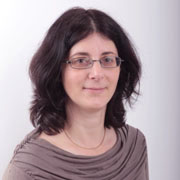
We use holographic optical tweezers to manipulate and drive microscopic objects, a variety of optical microscopy techniques to image these objects, and image analysis to study their motion and morphology

Dr. Eran Sela (Associate Professor) works on topological states in condensed matter with non-Abelian excitations, analysis of quantum transport experiments in low dimensional systems such as quantum wires and quantum dots where novel non-Abelian excitations of Majorana type have been detected, and physical measurements of quantum entanglement in cold atom systems and in futuristic quantum computers. These activities span a large number of works with M.Sc and Ph.D students, postdocs, and multiple collaborations with researchers from TAU and other institutions in Israel and abroad.
Research achievements include: developments of new theoretical approaches to topological states and spin-liquids, realizations of fractional quantum Hall physics in one-dimensional systems, primarily cold atomic lattices and semi-conductor wires, and Majorana fermions in closed cold atom lattices; In the field of quantum transport he predicted novel signatures in transport of such interacting wires with spin-orbit coupling and proposed realistic quantum computing schemes based on the surface-code.
Future directions include: measurements of quantum entanglement in condensed matter systems and quantum computers, and demonstrating its relation with topological order and non-Abelian anyons, as well as non-Fermi liquid Kondo physics.
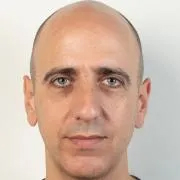
The research that Prop. Shokef leads employs theoretical and computational tools to understand the physics of soft matter systems. In such natural as well as designed structures, we often understand pretty well how individual units behave, but the system as a whole exhibits non-trivial emergent phenomena. Prof. Shokef's current research focuses on memory and computing in smart materials, mechanics of living systems, and mechanical metamaterials.
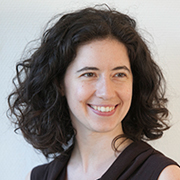 Hadas Soifer (Senior Lecturer) studies nonequilibrium electron dynamics and light-matter interactions in quantum materials using ultrafast time- and angle-resolved photoemission spectroscopy (trARPES). Her research focuses on nonlinear optical phenomena in topological matter such as topological insulators and Weyl semimetals, with a special interest in photocurrent generation. Also, she conducts research on electron-phonon coupling in strongly correlated materials.
Hadas Soifer (Senior Lecturer) studies nonequilibrium electron dynamics and light-matter interactions in quantum materials using ultrafast time- and angle-resolved photoemission spectroscopy (trARPES). Her research focuses on nonlinear optical phenomena in topological matter such as topological insulators and Weyl semimetals, with a special interest in photocurrent generation. Also, she conducts research on electron-phonon coupling in strongly correlated materials.
Research achievements include: Resolved the electronic states involved in photocurrent generation in a topological insulator, and revealed the symmetry and resonance conditions required for the process to occur. Used the femtosecond-resolved coherently excited phonon modulations in an iron based superconductor to quantify the electron-phonon coupling in the material.
Future Directions include: Exploring the optical properties of quantum materials, in order to harness these materials for quantum computation and detection. Studying photocurrent generation in a Weyl semimetal as a probe for its topological properties. Develop mid-IR pumping to resonantly excite low energy modes and perform sub-gap excitations of quantum materials. Build a HHG source for an XUV probe which will allow measurements of the whole Brillouin zone of most materials. Developing tools for coherent control of electronic states in solid state systems.
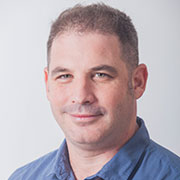
Dr. Haim Suchowski (Senior Lecturer) research focuses in exploring ultrafast dynamics in condensed matter physics, plasmonic nanostructures, silicon photonics and 2D materials. Also, he conducts research in quantum coherent control of atoms and molecules with ultra-short laser pulses. He is leading experimental research on nonlinear generation processes, metamaterials, including nonlinear optics from nanostructures and metasurfaces. In quantum coherent control, he performs experimental realization of coherent control schemes in various physical systems: atomic physics, frequency conversion, polarization optics, and silicon photonics. He also performs theoretical research on a Lie-algebraic approach to strong-field coherent control.
Research achievements include: Observation of ultrafast exciton-polaritons in 2D materials; pioneered the adiabatic frequency conversion and composite schemes in nonlinear optics that overcome the tradeoff between bandwidth and efficiency in frequency conversion processes, including the generation and control of the shortest mid-infrared ultrashort pulses sources. He conducted the first implementation of deep learning in nanophotonics. In geometrical quantum control, he developed the Pythagorean coupling and Retrograde Canon schemes.
Future directions include: Ultrafast dynamics in various condensed matter systems, including in 2D materials and coupled nanosystems. Develop a theoretical understanding at the microscopic level of the fundamental processes underlying correlated electron phenomena in complex and exotic materials, semiconductor nanostructures, and dynamics in molecular and nano-composites. Continue efforts to apply Deep Learning to reveal ultrafast and nonlinear dynamics at the nanoscale. Experimental realization of composite pulses scheme in quantum integrated photonics and nonlinear optics.

-
Quantum information theory and its applications to nonperturbative quantum physics
-
Quantum Simulation
-
Tensor Networks
-
Quantum Field Theories
-
Lattice Gauge Theories
Professors Emeriti:
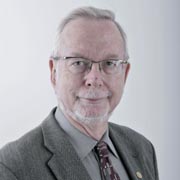
Prof. Amnon Aharony (Professor Emeritus) works on a range of topics in condensed matter theory, especially in mesoscopic physics and spintronics. Examples include spin filtering and spin splitting due to the spin-orbit interaction, combined with a variety of mechanisms which break time reversal symmetry, decoherence due e.g. to telegraph noise, Josephson junctions with spin-orbit active links, transport via molecular junctions (including full counting of the current distributions and noise), thermoelectricity (e.g. in three-terminal devices), multiferroics, and more.
Research achievements include: Explained spin splitting in chiral molecules, proposed mechanisms to enhance the efficiency of mesoscopic thermoelectric devices, and more.
Future directions continue along all of the above lines.
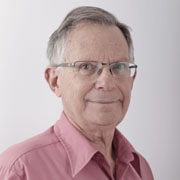
Prof. David Bergman (Professor Emeritus) works mainly on physical properties of composite media or meta-materials. Recently he developed the eigenstates of the full Maxwell equations in such a medium as a basis for expanding the local EM field in that medium which results either from a given incident field or a given charge and current distribution. This has resulted in a very efficient method for computing such a physical field. He has also been studying the macroscopic response of a composite thermoelectric medium when a strong external magnetic field B is applied. In a composite where the micro-structure is periodic this response is strongly dependent upon the direction of B and that of the macroscopic electric and heat currents. There is also an intriguing possibility of finding such a composite where the thermoelectric figure of merit is large enough so that such a material can be useful in technology for the construction of an efficient heat pump or electric power generator. He has also been collaborating with a chemist (Ed Kossower) from our School of Chemistry in trying to understand the infra-red absorption spectrum of some water oligomers which lie upon a thin layer of polyethylene. In particular, surprising resonant dips in that spectrum were discovered by EK in his experiments. Those dips change into peaks when the temperature is raised. These observations have now been explained by these two collaborators.
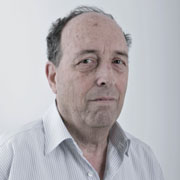
Prof. Reuven Chen (Professor Emeritus) has been working on different aspects of luminescence in solids. In particular have been studied thermoluminesnce (TL), optically stimulated luminescence (OSL) and radioluminescence (RL). Different aspects have been studied theoretically to explain various effects previously reported in different materials, in particular materials involved in the applications in dosimetry and in geological and archaeological dating such as quartz, feldspars, LiF and Al2O3. The methods used included numerical simulations consisting of the numerical solution of the relevant simultaneous differential equations as well as analytical approximate solutions and Monte Carlo simulations.
Research achievements include: explanation of the non-linear dose dependence of TL and OSL including strong superlinear and sublinear dependencies; dependence of these phenomena on the dose-rate effect; models of concentration quenching and thermal quenching of TL; linear-modulated-OSL (LM-OSL); thermally assisted OSL (TA-OSL); stability of the TL and OSL signals; normal and anomalous heating-rate effects of TL; a model of thermally-transferred OSL (TT-OSL).
Future work planned: Effects associated with two-electron traps and of two-hole centers; competition between excitation and fading of TL and OSL using Monte Carlo simulation; signals from a random distribution of defects.
-
Mossbauer Effect
-
Quantum and statistical mechanics of many body systems
-
Superfluidity and superconductivity
-
Hydrodinamics, equilubrium and transport in superfluid Helium systems
-
Transport in liquid Helium at very low temperatures in nano-channels
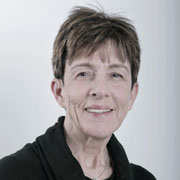
Prof. Ora Entin (Professor Emerita) works on a range of topics in condensed matter theory, especially in mesoscopic physics, superconductivity and spintronics. Examples include spin filtering and spin splitting due to the spin-orbit interaction, combined with a variety of mechanisms which break time reversal symmetry, decoherence due e.g. to telegraph noise, Josephson junctions with spin-orbit active links, transport via molecular junctions (including full counting of the current distributions and noise), pair breaking which prevent superconductivity due to magnetic impurities, thermoelectricity (e.g. in three-terminal devices), multiferroics, and more.
Research achievements include: Explained spin splitting in chiral molecules, solved a long-standing puzzle on the large persistent current in copper rings, proposed mechanisms to enhance the efficiency of mesoscopic thermoelectric devices, and more.
Future directions continue along all of the above lines.
-
Analog gravity in nonlinear optical systems. Hawking radiation.
-
Tunneling processes in nonlinear systems
-
Magnetism in dilute magnetic semiconductors
-
Shuttling quantum dots
-
Bose-Einstein condensation
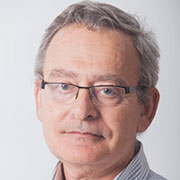
Prof. Yacov Kantor (Full Professor) works on several topics of statistical mechanics of random and entropy-dominated systems. The research includes both equilibrium properties and dynamics. Study of the properties of polymers plays a central role in his research.
Research achievements include: Development of a theory that views translocation of polymers through a hole in a membrane as an anomalous diffusion process. Since such processes play an important role both in biophysical systems and in the experimental manipulation of polymers, this approach became a standard language with which such processes are described. Single molecule manipulation by holding it attached to a surface, or to an atomic force microscope tip is a standard technique for more than a decade. Prof. Kantor found that forces between scale-free surfaces (such as infinite planes, cones, pyramids, etc.) mediated by flexible polymers, are universal, and can be solely described by means of critical exponents and without any reference to microscopic details of the interactions. (This is an unusual case of exponents, typically describing phase transitions, directly determining the numerical outcome of a mechanic measurement.)
Future directions include: nonequilibrium dynamics of knots and loops in polymers, study of competing adhesion of a polymer to objects of several dimensionalities, as well as behavior of polymers far from equilibrium.
-
Lasers and electro optics
-
Middle infrared spectroscopy
-
Biomedical optics
-
Monitoring of pollutants in water
-
Fiber lasers in the middle infrared
-
Infrared fiber sensors
-
Laser bonding of incisions in tissues
-
Middle infrared near field microscopy
-
Medical dosimetry
A Josephson junction is a quantum mechanical device consisting of two superconductors separated by a very thin barrier. In spite of the barrier, and due to quantum mechanics, the superconducting electrons in one superconductor “feel” their neighbors in the other superconductor and “synchronize” with them. This quantum mechanical coherence on a macroscopic scale allows using Josephson junctions as very precise sensors of magnetic fields, e.g., for imaging, or as basic elements for a scalable quantum computer.
Our research is focused on the fundamental and applied physics of the Josephson effect.
-
Josephson junctions with alternating critical current density, physics of the Josephson effect in grain boundaries in thin films of high-temperature superconductors and superconductor-ferromagnet-superconductor tunnel junctions, splinter vortices carrying nonquantized flux;
-
Nonlocal electrodynamics of Josephson junctions in thin films of high-temperature superconductors, Cherenkov radiation by nonquantized splinter vortices;
-
Coherent emission of terahertz electromagnetic waves from intrinsic Josephson junction stacks in layered high-temperature superconductors in the regime of high-bias current that creates spatial regions with temperature above the critical temperature.

